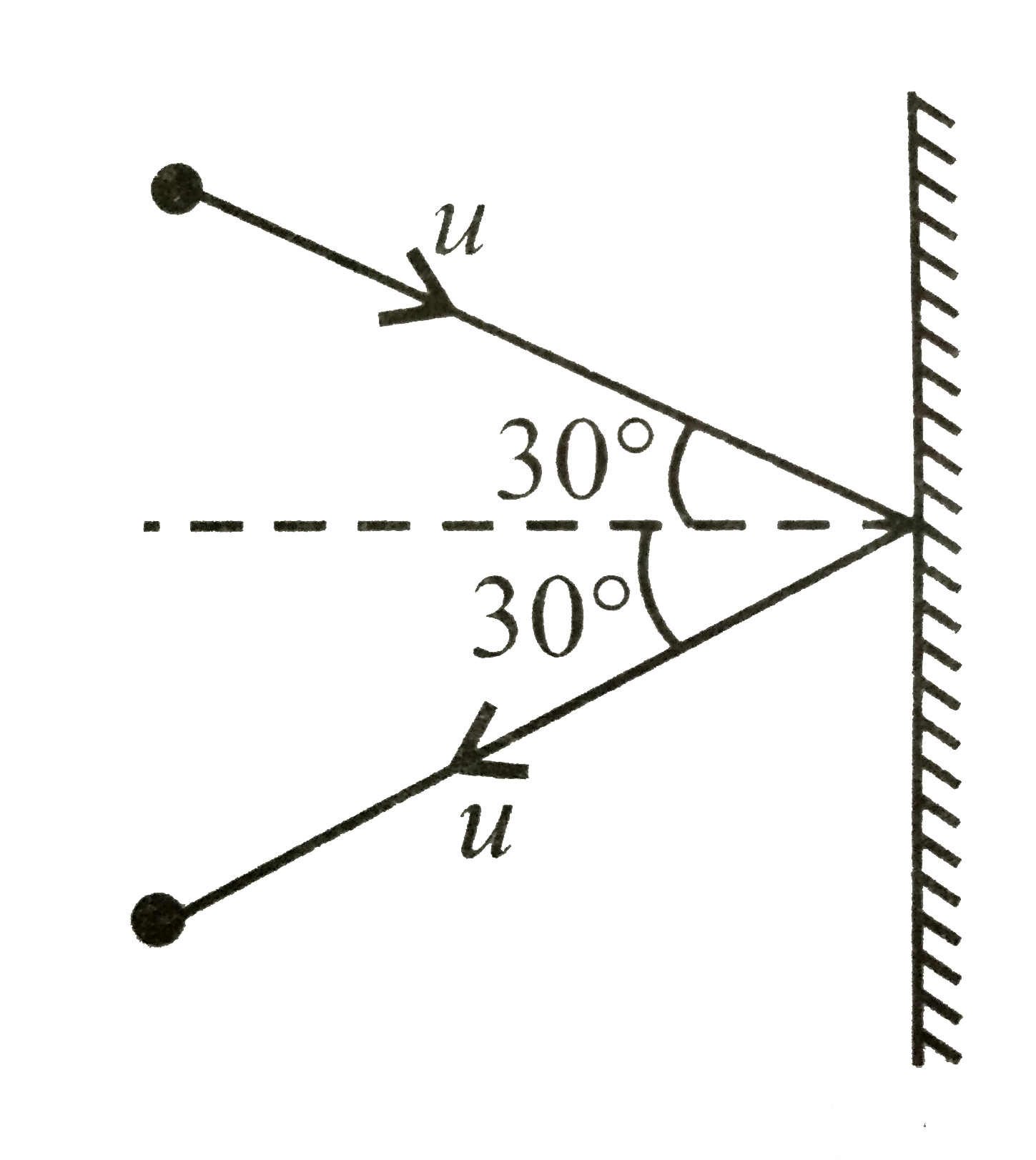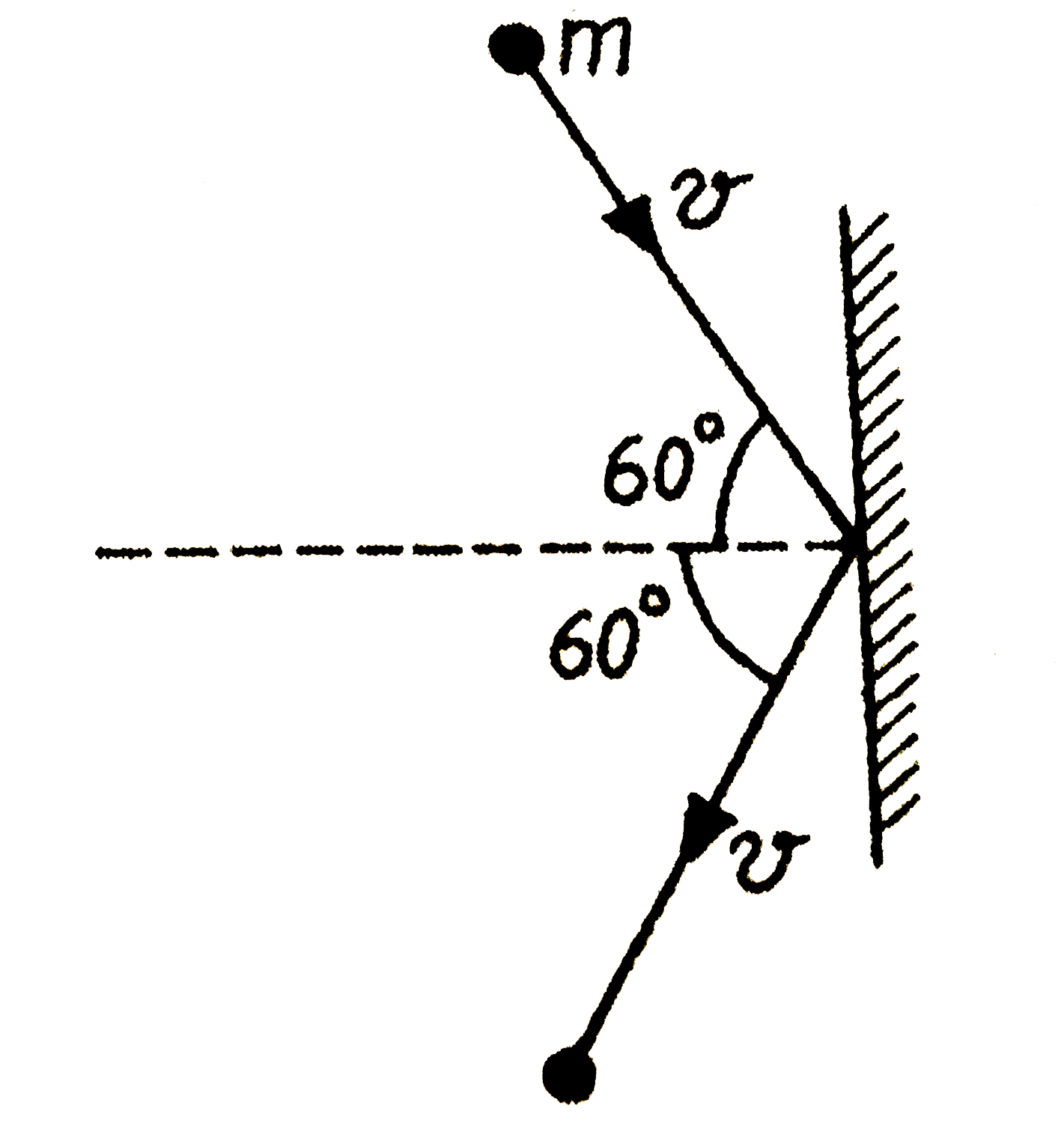A 10g rubber ball and a 10g clay ball are each thrown at a wall with equal speeds. The rubber ball bounces, the clay ball sticks. Which ball receives a greater impulse from the wall ?Solution in Gujrati
The clay ball recieves a greater impulse because it sicks.
The rubber ball receive a greater impulse because it bounces.
They receive equal impulses because they have equal momenta.
Neither receives an impulse because the wall doesn't move.
The correct Answer is:B
Step by step video & image solution for A 10 g rubber ball and a 10g clay ball are each thrown at a wall with equal speeds. The rubber ball bounces, the clay ball sticks. Which ball receives a greater impulse from the wall ? by Physics experts to help you in doubts & scoring excellent marks in Class 11 exams.
Updated on:21/07/2023Topper's Solved these Questions
- CENTRE OF MASSBOOK - ALLEN CHAPTER - CENTRE OF MASSEXERCISE - EXERCISE-II
43 Videos
- CENTRE OF MASSBOOK - ALLEN CHAPTER - CENTRE OF MASSEXERCISE - EXERCISE-III
41 Videos
- CENTRE OF MASSBOOK - ALLEN CHAPTER - CENTRE OF MASSEXERCISE - EXERCISE-V B
19 Videos
- BASIC MATHEMATICS USED IN PHYSICS &VECTORS BOOK - ALLEN CHAPTER - BASIC MATHEMATICS USED IN PHYSICS &VECTORS EXERCISE - EXERCISE-IV ASSERTION & REASON
11 Videos
- ELASTICITY, SURFACE TENSION AND FLUID MECHANICSBOOK - ALLEN CHAPTER - ELASTICITY, SURFACE TENSION AND FLUID MECHANICSEXERCISE - Exercise 5 B (Integer Type Questions)
3 Videos
Similar Questions
Two particle A and B start moving due to their mutual interaction only. If at any tiem 't', →aA and →aB are their respective accelerations, →vA and →vB are their respective velocities, and upto that time WA and WB are the work done on A and B respectively by the mutual force, mA and mB are their masses respectively, then which of the following is alwys correct.
View SolutionA particle of mass m, kinetic energy K and momentum p collision head on elastically with another particle of mass 2m at rest. After collision. :
Column IColumn II(A)Momentum of first particle(p)3/4p(B)Momentum of second particle(q)−K/9(C)Kinetic energy of first particle(r)−p/3(D)Kinetic energy of second particle(s)8K9None
View SolutionTwo particles of masses m1 and m2 in projectile motion have velocities →v1 and →v2 , respectively , at time t=0. They collide at time t0. Their velocities become →v'1 and →v'2 at time 2t0 while still moving in air. The value of ∣∣∣(m1→v'1+m2→v'2)−(m1→v1+m2→v2)∣∣∣
View SolutionAssertion: If the initial and final positions coincide, the displacement is a null vector.
Reason: A physical quantity can not be called a vector, if its magnitude is zero.
View SolutionTwo soap bubbles A and B are kept in a closed chamber where the air is maintained at pressure 8N/m2.The radii of bubbles A and B are 2cm and 4cm, respectively. Surface tension of the soap-water used to make bubbles is 0.04N/m. Find tha ratio nB/nA, where nA and nB are the number of moles of air in bubbles A and B, respectively. [Neglect the effect of gravity.]
View SolutionA metal ball and a rubber ball , both having the same mass , strike a wall normally with the same velocity. The rubber ball rebounds and the metal ball does not rebound. It can be concluded that
View SolutionA plastic ball and a clay ball of equal masses, travelling in the same direction with equal speeds, strike against a vertical wall. From which ball does the wall receive a greater amount of momentum?
View SolutionA ball of mass m strikes a rigid walJ with speed u and rebounds with the same speed. The impulse imparted to the ball by the wall is

View Solutionm द्रव्यमान की एक दृढ़ गेंद किसी दृढ़ दीवार से 60∘पर टकराकर प्रवर्तित हो जाती है। यदि इस प्रक्रिया में गेंद की चाल में कोई हानि नहीं होती है, तो दीवार द्वारा गेंद पर लगे आवेग का मान होगा:

View SolutionA metalic ball strikes a wall and drops dead whereas rubber ball having the same mass and velocity bounces back. Which of the following is correct ?
View SolutionA metal ball hits a wall and does not rebound whereas a rubber ball of the same mass on hitting the wall the same velocity rebounds back. It can be concluded that–
View SolutionBefore a rubber ball bounces off from the floor the ball is in contact with the floor for a fraction of second. Which of the following statements are correct-
View Solutionएक धातु की गेंद फर्श पर टकराने के बाद कम ऊँचाई तक उछलती है और रबर की गेंद अधिक उछलती है । क्यों ?
View SolutionA metal ball hits a wall and does not rebound, where as b a rubber ball of the same mass on hitting the wall with the same velocity rebounds back. It can be concluded that:
View SolutionA metal ball hits a wall and does not rebound, where as a rubber ball of the same mass on hitting the wall with the same velocity rebounds back. It can be concluded that:
View SolutionWhy does rubber ball bounce greater heights on hills than
View Solution
